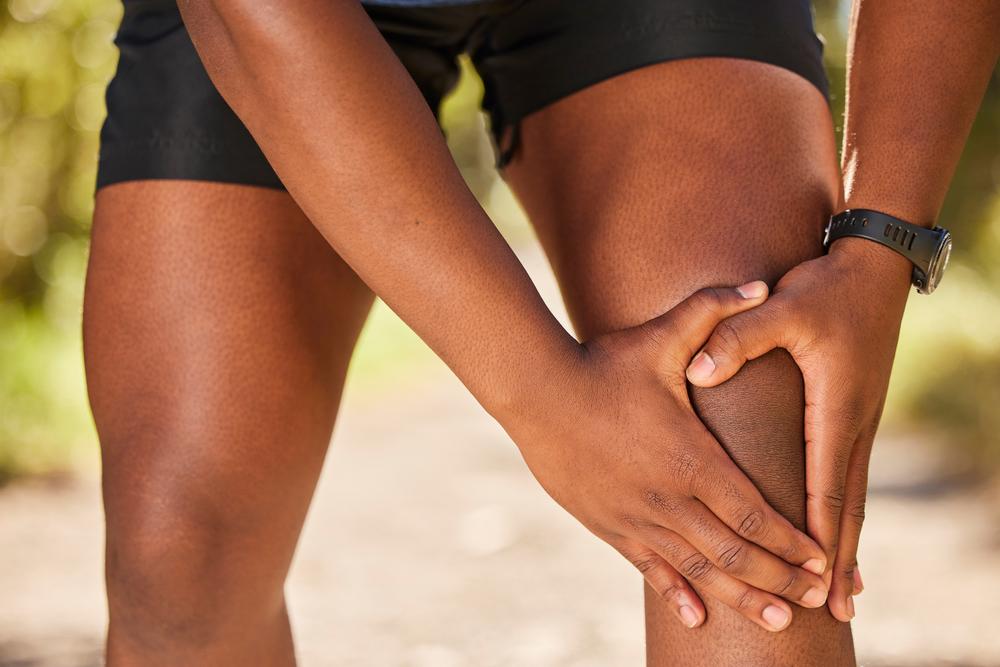Knee pain is a common issue that affects approximately 25% of adults and is the reason behind more than 4 million primary care appointments every year. With such a high prevalence rate, there has been plenty of research done about how to alleviate knee pain, particularly stretching the affected muscles.
When you have an ache in your knee, it can make you want to lie down for the rest of the day. But life doesn’t stop when you have knee pain. The good news is that there are plenty of stretches that can do the trick. What are the safest and most effective stretches to perform? That’s what we’re here to tell you.
We’ll walk you through stretches for knee pain that you can be guided through by your physical therapist. We’ll also discuss common causes of knee pain that would benefit from the stretches.
5 stretches that can help reduce your knee pain
When you’re feeling an ache in your knee from an injury or medical condition, you’re likely feeling stiffness or a reduced range of motion as well. Stretching helps to reduce pain by targeting the imbalances of the muscles surrounding the knee joint while also improving the overall flexibility and mobility of the joint.
Here are five stretches that a physical therapist may recommend to reduce your knee pain and restore the joint’s function. They’ll instruct you on how often to repeat the stretch between sessions.
- Hamstring stretch — Lie down on your back. You can extend your legs or keep them bent with your feet flat on the floor if that’s more comfortable. Lift one of your legs in the air. Place your hands behind your thigh and pull your knee gently toward your chest until you feel a stretch. Hold the position for up to 30 seconds, or as directed by your physical therapist. Lower your leg back down and switch to the other.
- Quadriceps stretch — Stand with your feet shoulder width apart. Use a wall or chair for balance as you bend one knee up behind you. Grab your ankle and gently pull it toward your glutes. Hold it for 30 seconds, or as directed by your physical therapist. Lower your leg to the starting position and switch to the other leg.
- Heel and calf stretch — Stand facing a wall. Step backward with your left leg and place your hands on the wall. There should be a slight bend in your knees with your feet flat on the floor and facing forward to the wall. Lean into the stretch until you feel a gentle pull in your left leg. Hold it for 30 seconds, or as directed by your physical therapist. Bring your legs together to the starting position before switching to the other leg.
- Straight leg stretch — Lie down on your back. Extend the leg with the affected knee while bending the opposite leg. Slowly raise your affected leg by tightening your thigh muscles. Once the leg reaches the height of the bent knee, hold the position for five seconds or as directed by your physical therapist, before lowering the leg to resting position.
- Half squat — Stand with your feet shoulder width apart. Slowly lower your hips as if you’re about to sit in a chair. Be sure to keep your chest lifted and don’t bend at the waist. Put the weight through your heel and hold the position for five seconds, or as directed by your physical therapist, before returning to the starting position. Repeat as directed.
Common reasons you may be having knee pain
There are many explanations for knee pain that can benefit from stretching. Some reasons are injuries while others are medical conditions that require further treatment. Your physical therapist can help determine the likely cause of your pain and design an exercise program of safe and effective stretches that can help.
Here are some potential causes of knee pain that can be alleviated through therapeutic stretches:
- Sprain/strain — If a ligament in the knee joint becomes overstretched or torn, it’s called a knee sprain. If a tendon or muscle in the surrounding area becomes damaged, it’s known as a knee strain. Both can cause knee pain that can benefit from therapeutic stretches.
- Tendinitis — There’s a tendon that runs from the kneecap to the shinbone, known as the patellar tendon, that can become inflamed due to overuse from running or jumping. Also known as jumper’s knee, patellar tendinitis can cause pain as well as stiffness and swelling that can be alleviated by stretching.
- Arthritis — The most common type of arthritis that can develop in the knee is osteoarthritis. It refers to wear and tear on the knee joint that causes the cartilage to gradually break down over time. It results in stiffness and pain that can be alleviated with the right stretches.
Forever Fit Physical Therapy & Wellness can guide you through stretches for knee pain
Knee pain can interfere with your overall quality of life by preventing you from carrying out your daily physical activities. Forever Fit physical therapists can get you back to your routine by walking you through safe and effective stretches to alleviate your pain and increase your mobility.
Contact our team today for more information or to schedule an initial appointment.

